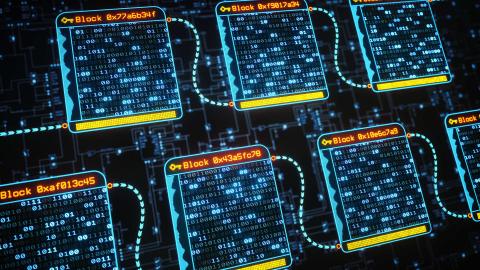
Q:Should we start accepting cryptocurrency for customer bill payment?
A:Investment in cryptocurrencies such as Bitcoin and Ethereum has grown considerably in recent years, but not many people use cryptocurrencies to complete their everyday financial transactions. Most cryptocurrencies use a cryptographic verification technology referred to as a blockchain—a distributed public digital ledger that serves as the immutable record for all prior financial transactions.
Whether utilities should accept cryptocurrencies as a payment option for customer billing is largely a question of priority. Do you want to be a leader in this space? Are your customers investing in and using cryptocurrency? And perhaps most importantly, does using cryptocurrency to pay a utility bill solve a problem or otherwise improve the customer bill-pay experience? The evidence we’ve seen suggests little demand for the use of cryptocurrency as a utility bill payment option. As described in the Engerati article Cryptocurrencies for Utility Bill Payments—Is the World Ready?, enercity AG in Hannover, Germany, has given its 650,000 customers the option to pay with Bitcoin since 2016 and has thus far logged fewer than 100 payment transactions via this method.
We’re aware of three energy utilities that accept cryptocurrency for customer bill payment: Eva Energy in Romania, NextGen Energy in New Zealand, and enercity AG. Eva Energy accepts all forms of cryptocurrency and the other two accept only Bitcoin. Tokens based on the Ethereum and Bitcoin platforms might be a good choice of cryptocurrency to accept because they’re relatively popular. However, considering that there are now nearly 2,000 types of cryptocurrency and that their technologies and markets are rapidly evolving, it’s hard to know which one to pick. Eva Energy seems to have gotten around this problem by accepting all crypto types via the COSS (Crypto One-Stop Solution) Payment Gateway based in Romania and Singapore. This solution, however, may not be foolproof; similar crypto exchange houses have failed catastrophically in past years (see Mt. Gox and Coincheck).
Though it’s too early to tell exactly how blockchain and cryptocurrencies will affect utilities, we think that in addition to facilitating bill payment, the technology may contribute to load growth and help with energy transaction tracking.
How will cryptocurrency contribute to load growth?
Data centers that house a large number of servers have been popping up all over the world to meet the demand for cryptocurrency creation, as well as verification and maintenance of blockchain ledgers. Though cryptocurrency “mining” can take place on a small scale by savvy individuals running a dedicated server in their basement, these facilities are becoming large and sophisticated. However, this may not represent a significant opportunity for your utility if it’s not in a highly attractive location relative to data center siting. And even if you’re in a favorable location, the realities of crypto mining have consistently proved more intense than what utilities and municipalities were prepared for. For more details on this last point, see the articles This Is What Happens When Bitcoin Miners Take Over Your Town and Cryptominers Are Stuck in Limbo as Hydro-Québec Suspends Requests for Power.
How will blockchain facilitate energy transaction tracking?
Blockchain enables secure, decentralized, peer-to-peer financial transactions, so this technology and others like it are shaking up financial institutions. In the utility industry, a major challenge to successful grid modernization is real-time, two-way tracking of power flow. Utilities could use blockchain to fairly compensate customers for making valuable contributions to grid operation, and possibly even to transact energy directly with other actors on the grid. Energy industry players are testing and demonstrating this concept, commonly referred to as transactive energy, and some think blockchain could be an enabling technology in this application. LO3 Energy was the first company to propose and demonstrate a blockchain-based transactive energy system, most notably with its Brooklyn Microgrid demonstration project. Utility industry professionals tell us they don’t expect to adopt a fully transactive energy system on their grid any time soon. Enabling and tracking all these end-point transactions would be challenging and data-intensive, and many utilities report challenges even with managing smart meter data. An intermediary solution may be something like the one proposed by Austin Energy for its Austin SHINES project (PDF): moving from a generation-only levelized cost of electricity (LCOE) valuation to a more systemwide LCOE.